Tsukiji Market is not your typical run-of-the-mill seafood market. This is simply the best fish market in the world.
In addition to being the best, it is also the biggest fish market in the world, with 60,000-65,000 employees at any given time. This massive wholesale market has become a major tourist attraction for Tokyo, drawing in thousands of people per day to gawk at the wide variety of impeccable fresh products.
And while it is popular with tourists, this is still very much a working market and business is brisk. The individual stalls are tiny, the aisles are narrow, the floor is wet, there are boxes everywhere, and the place runs at a frantic pace, as carts and trucks buzz through, loaded with the morning deliveries.
As we found with our visit to Tokyo, arriving with a plan is always a good idea.
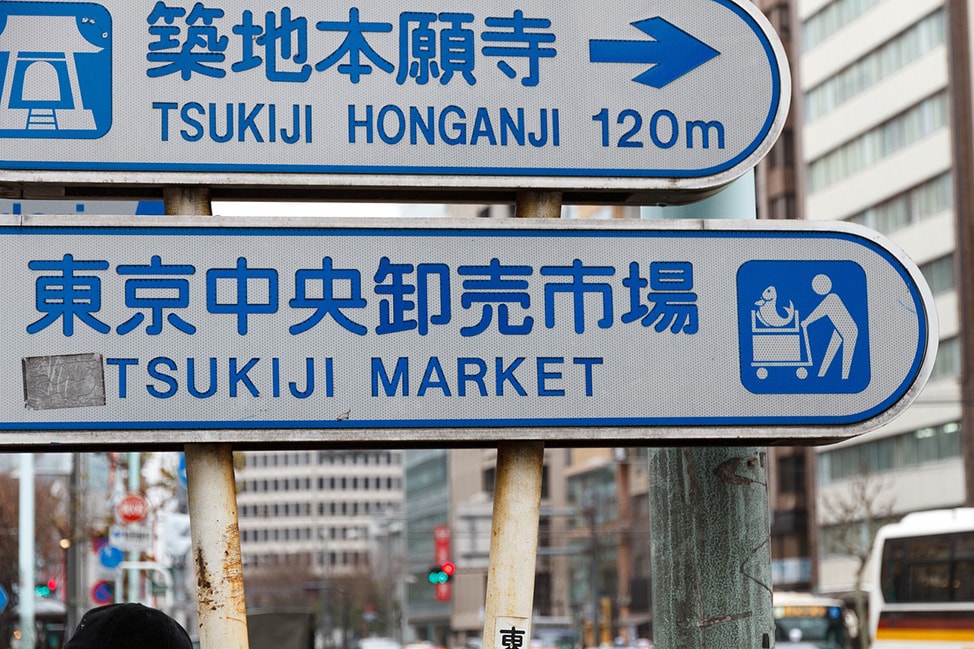
Tsukiji Fish Market Guide
Orientation
Tsukiji Market is located just south of the ritzy Ginza shopping district, and easily accessible by the Tokyo metro. You can get off at Higashi-ginza Station on the Asakusa Line, Tsukiji Station on the Hibiya Line, or Tsukijishijo Station on the Oedo Line. All of these stations are only a few blocks away from the market.
When you approach Tsukiji Market, you will first encounter the “Outer Market” which surrounds the “Inner Market.” This area is not the main wholesale area, but rather a stretch of retail stores in cramped lanes selling kitchen supplies, food products, and some seafood. The Outer Market is also home to many food stalls, frying or grilling local seafood for visitors.
The Inner Market is the home of the wholesale market. Here, the tight alleys of the Outer Market open up to a parking lot full of trucks loading up for deliveries around the world and the large covered market. Over 900 wholesalers can be found in the Inner Market, selling all sorts of seafood, from tuna to more obscure shellfish rarely seen outside of Japan.
For a better overlook at the layout of the market, check out this Tsukiji Market map, which shows the Inner and Outer Markets.
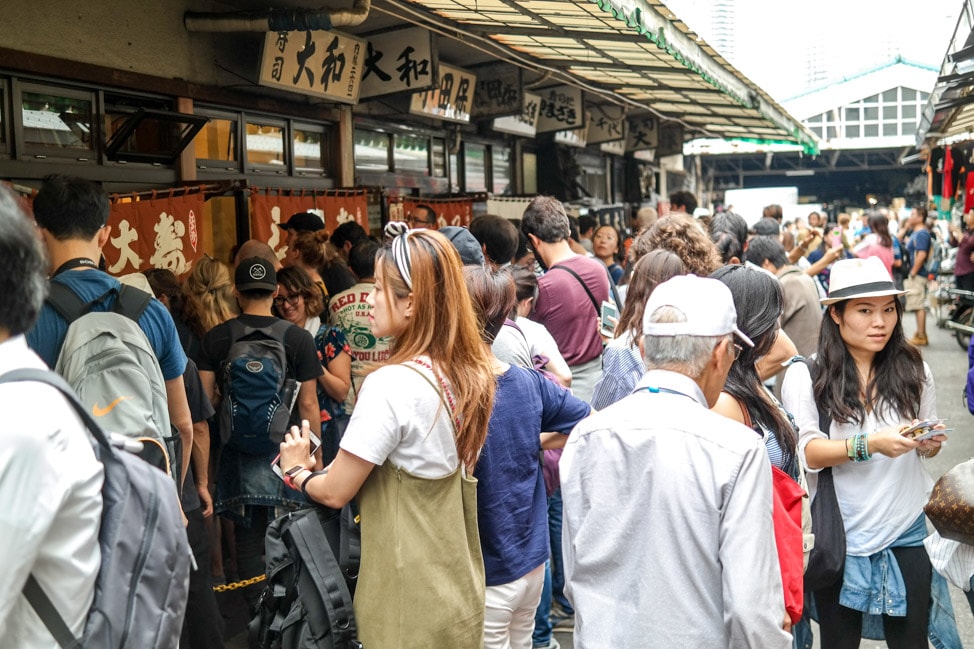
Tsukiji Fish Market Calendar and When to Visit
The market is not open every day, so it is best to check the market’s calendar (the dates marked in red are days the market is closed). The market is usually closed on Sundays and occasional Wednesdays, but there are also closures around Japanese holidays, so double check before heading out for a visit.
Since this is a working wholesale fish market, it is not open all day. The Inner Market is off limits to visitors until 10am (there is one exception to this, see below). Prior to that, the market is only open to wholesale buyers, who get a chance to survey the day’s catch without hoards of tourists getting in the way. By 1pm, most of the Inner Market is shut down for the day. The Outer Market, on the other hand, stays open later into the afternoon.
You should arrive as close to 10am as possible and head straight to the Inner Market to see it at its finest, before strolling through the Outer Market.
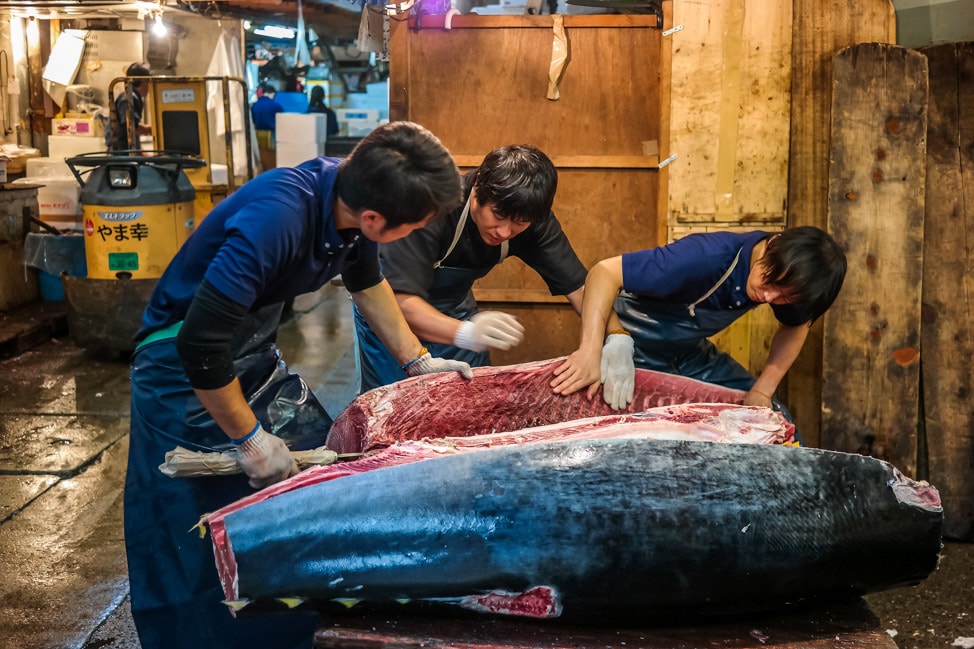
Exploring the Market
The Inner Market is where you should spend the most time. You are free to roam the market on your own (after 10am, that is). Seeing the abundance of impeccably fresh seafood is impressive. The tiny stalls, run by just a few people, are selling seafood to not just restaurants in Tokyo or Japan, but to many of the finest restaurants around the world.
Oh, and if you are worried about the smell emanating from a fish market on this scale, don’t be. Maybe it is due to the freshness of the product, or the Japanese obsession with cleanliness, but it doesn’t smell. At all.
If you are lucky, you might catch some fishmongers still wrapping up their butchering for the day, which might include a 500lb tuna, local eels, or large sea bass. Photographs are technically off limits, but if you want to snag a few photos, just do what we did and ask the fishmongers if it is okay. Just remember to wear shoes you don’t mind getting wet, since the stone floor is covered in water as the stalls hose down their tables from their work.
If you want a little more guidance, there are plenty of tours available that will escort you through the market, making sure you don’t miss any of the best bits.
Once you have explored the Inner Market, doing a little shopping in the Outer Market is the perfect way to conclude your day at Tsukiji. You can buy souvenirs, like high-quality Japanese knives, or simply shop for some condiments or seasonings to bring back home. Plus, with the abundance of stands selling tempura seafood or yakitori, it’s not a bad place for a snack.
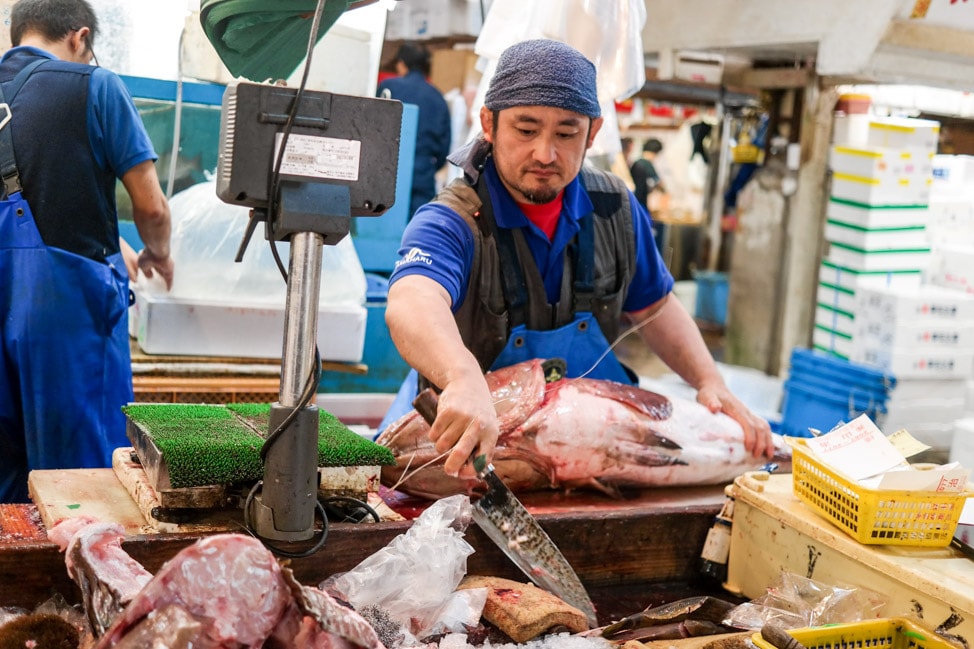
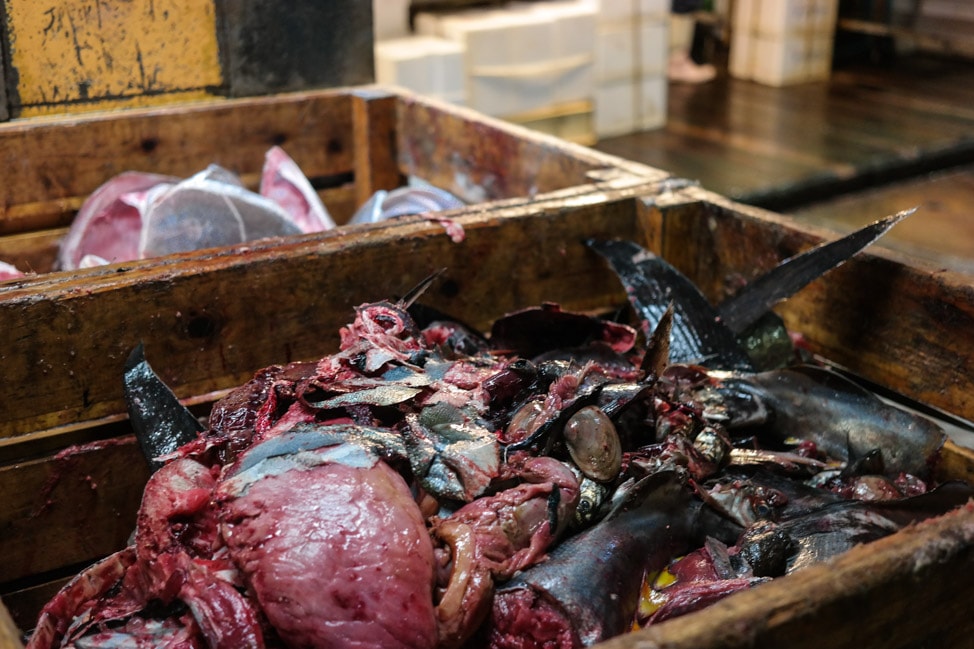
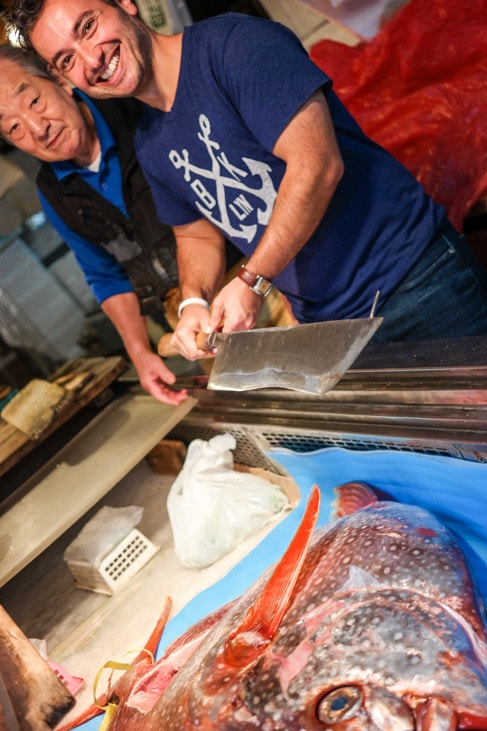
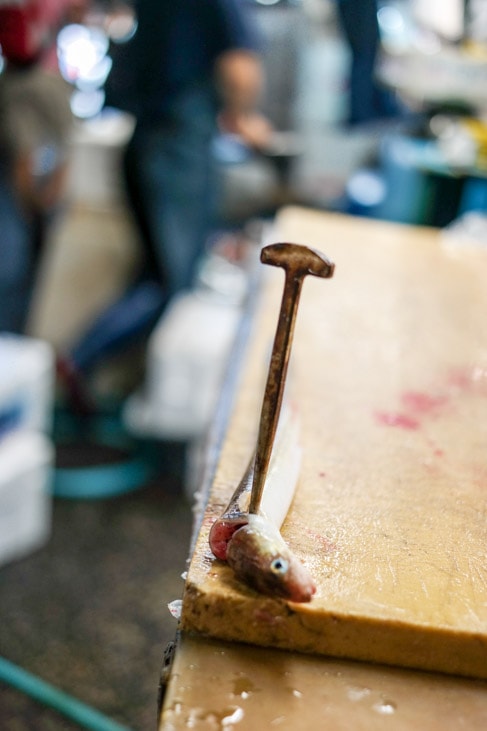
How to Watch the Tuna Auction
The tuna auction, where you can witness the finest tuna being sold to wholesalers, is one of the most sought after attractions at the market, but one that requires next-level planning. The auction is held each morning the market is open, with allowance for up to 120 guests each day, 60 people for each of the 2 sessions. The auctions are held at 5:25am and at 6:10am, both only lasting 20 minutes. To grab one of those coveted 120 slots, you need to arrive by 3am (or as early as 1am during peak season) and wait for the auction.
Make sure to dress appropriately, as most of the tuna is frozen and must stay that way, so the auction house is frigid.
There are tours that can help facilitate your attendance at the auction. We decided to skip this, as the thought of waking up at 2am and taking a taxi to Tsukiji (the metro does not run 24 hours) seemed a little bit too much for a 20 minute activity. That said, we did some research online for tours and this one gets good reviews.
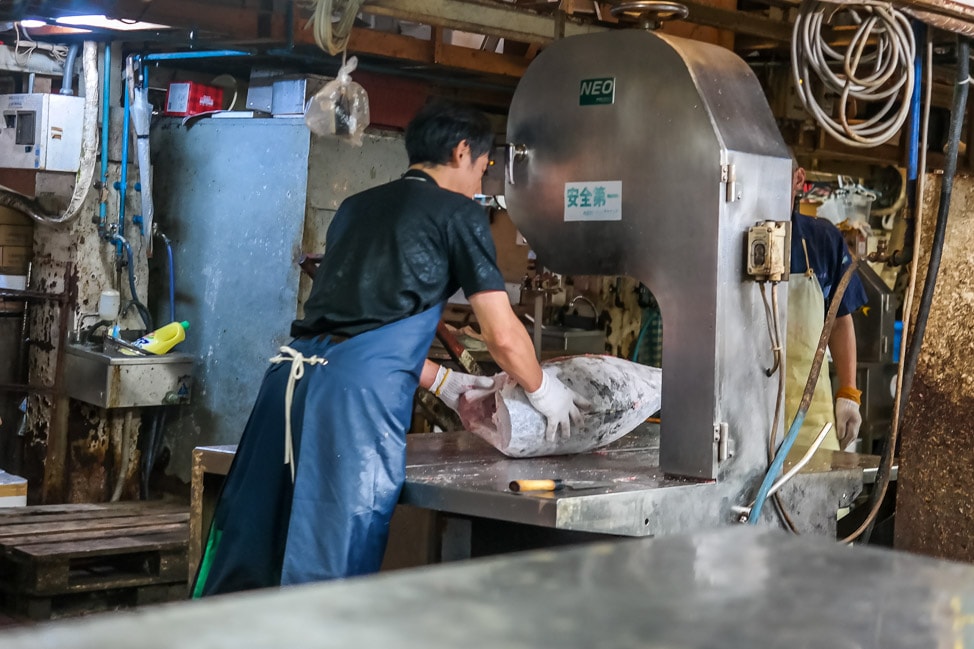
Where to Eat at Tsukiji Fish Market
While the Outer Market has plenty of food options, from stand-up sushi counters to hole-in-the-wall Japanese curry joints, the Inner Market has a few options as well. Near the wholesale market is a small stretch of tiny stores and restaurants that traditionally catered to the fish market workers, but have now become major eating destinations for visitors.
The most famous of these is Sushi Dai, a small sushi restaurant that seats only about 12 people. It begins serving sushi at 5am, a welcome breakfast for those who have finished work at the tuna auction. The downside is that Sushi Dai has become incredibly popular, much like the dozen or so restaurants in this stretch of the market. Queues begin around 3:30am for its 5am opening, and people routinely wait almost 4 hours in line for their ¥4,000 omaske sushi lunch.
For an alternative, Tempura Tenfusa is just a few doors down and offers some of the best tempura around, specializing in shrimp and eel, served crispy and piping hot. Amazingly, this shop is even tinier than Sushi Dai, with room for only 5 diners. Luckily, the queues tend to be a little shorter.
The Outer Market is just as busy, so quick and easy options for a sit-down meal without a queue is hard to come by, but there a trick. Just one block from the entrance to Tsukiji Market is Sushi Katsura, a great sushi restaurant serving the same quality seafood as Sushi Dai, but without the 4 hour queue. Move a single block away from the crowds of the market, and you can sit right down at the sushi counter for a 9 piece nigiri sushi set with a maki roll for only ¥950.
For those who don’t have the patience for ridiculous wait times (like yours truly), Sushi Katsura is the perfect option.
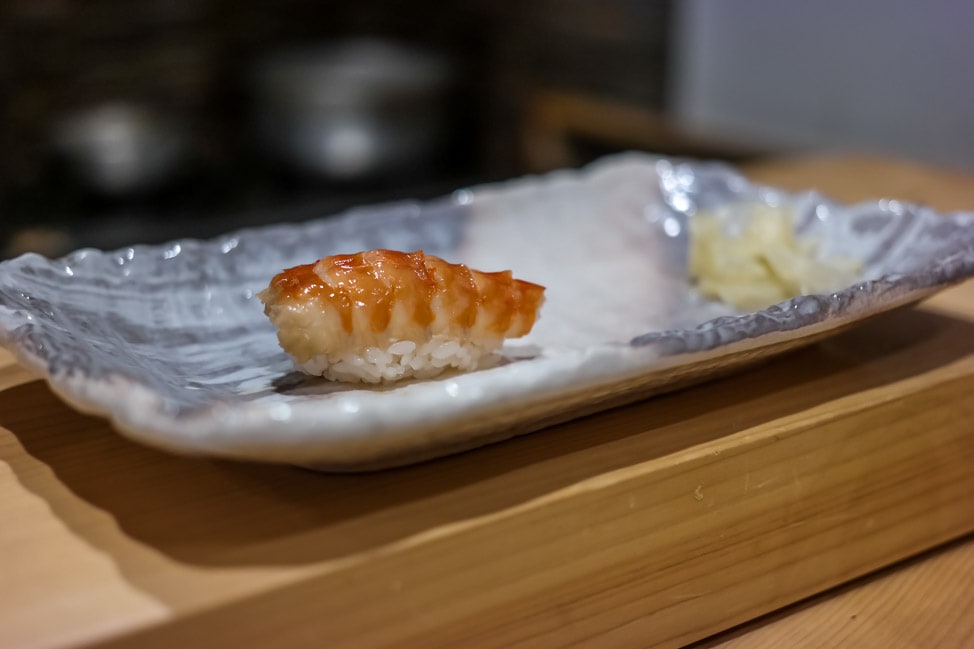
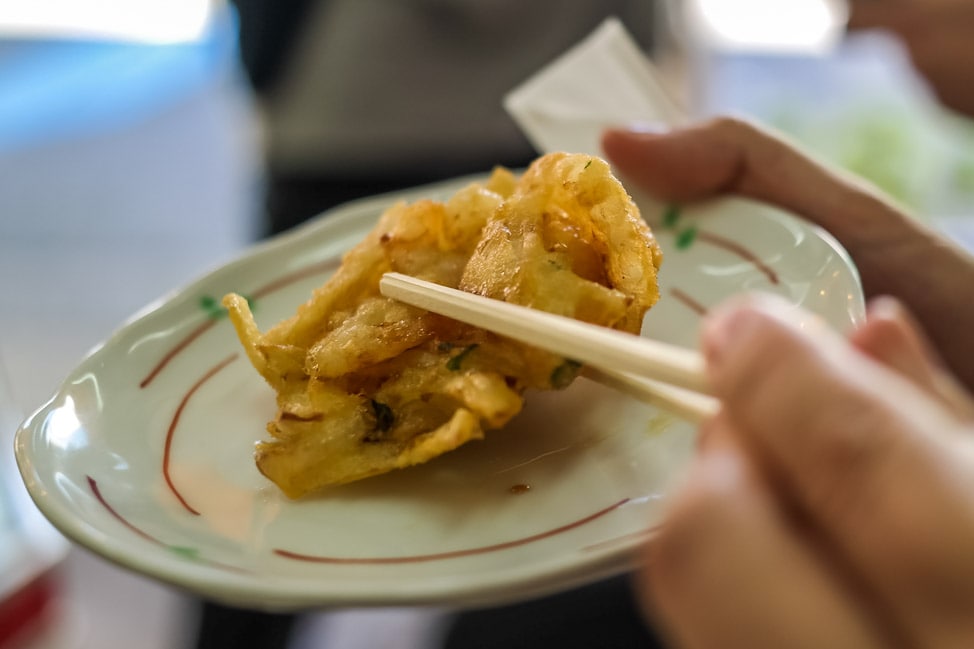
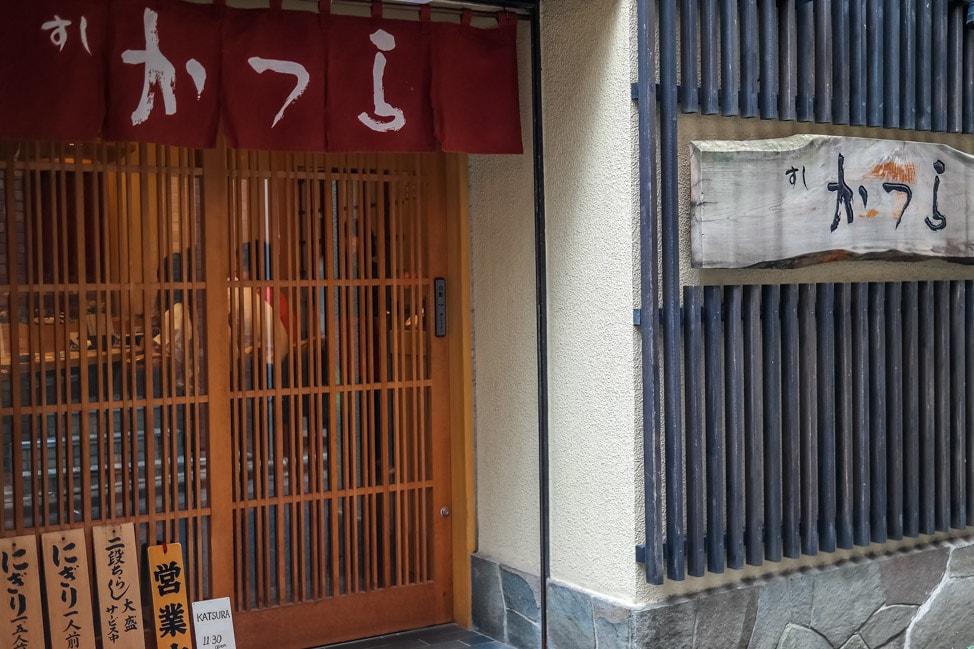
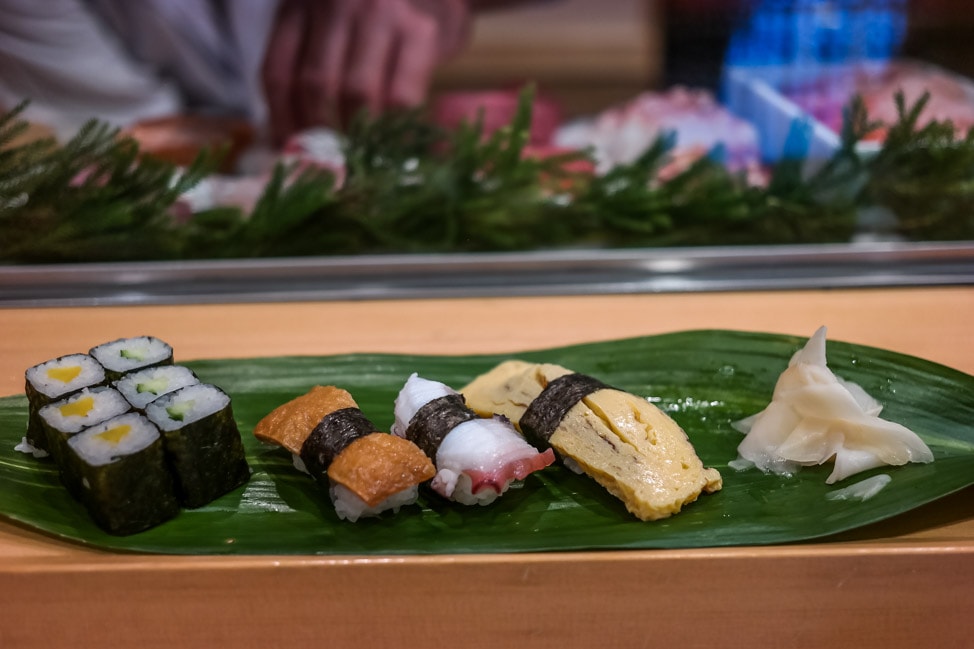
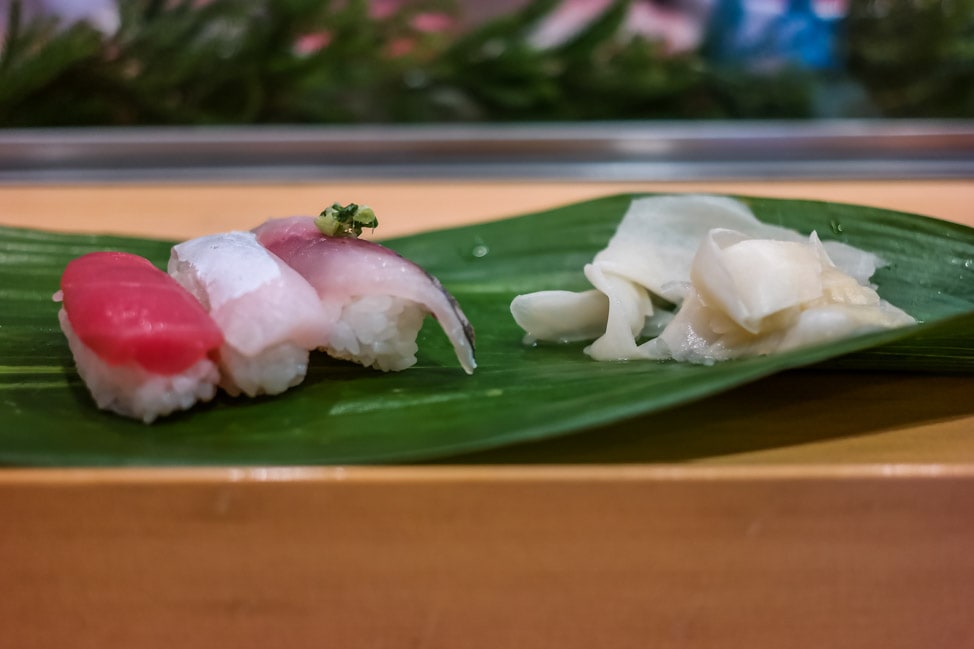
The Tsukiji Market is a must visit for any curious food lover in Tokyo. There is no gloss or shine to the place; it is an active, business-first market, and doesn’t pretend to be anything else. You will see buckets of fish innards, boxes of fish heads, and other curious things.
That’s what makes it great. It’s gritty and grimy and all business. And quite impressive.
Love food? Then in addition to exploring Tsukiji Market, don’t forget to go on a food tour. Check out our experience visiting a shopping street in East Tokyo and eating all of the local favorites!

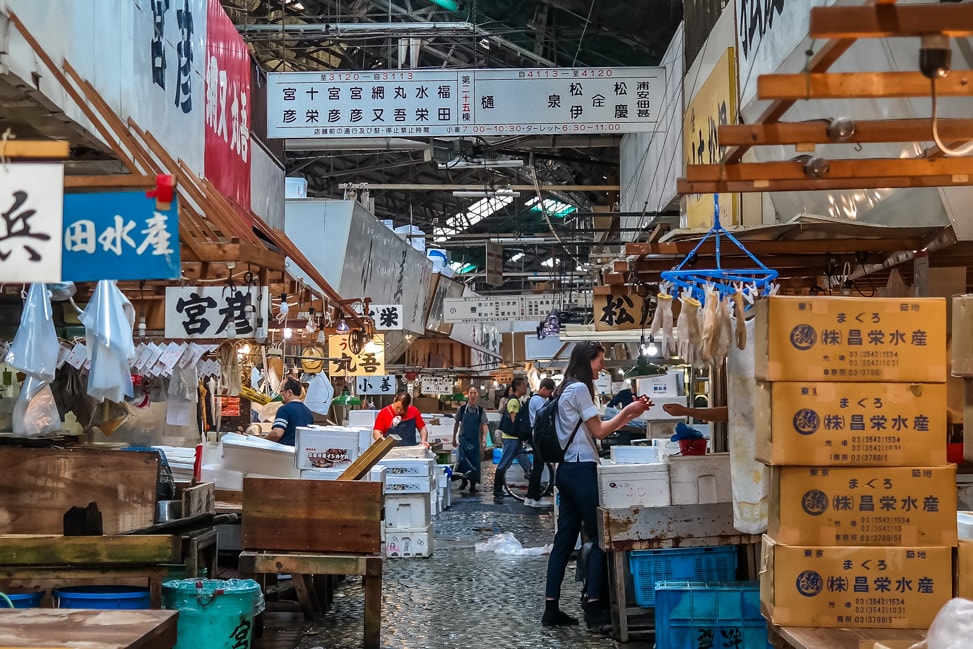
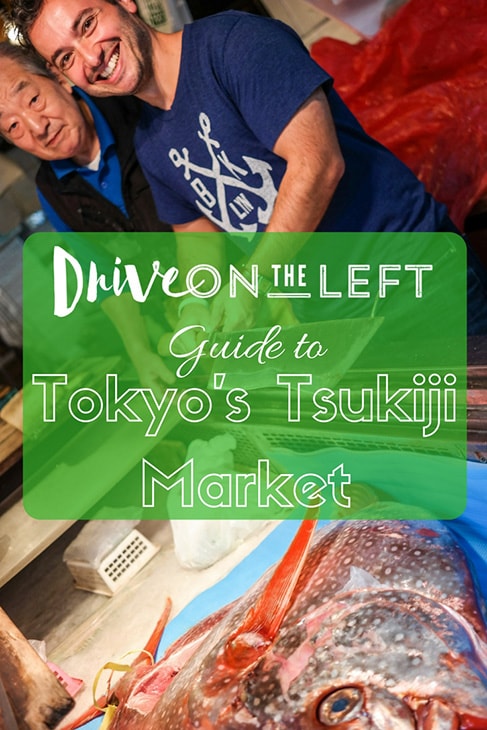










While reading the post I was thinking Wow that’s why they have the best sushi. Everything’s fresh! Then finally a sushi experience at the end of the tour. Will definitely try this when I visit Tokyo. Will travel for food! ????
Like you, we didn’t do the early morning tuna tour but still loved our visit to Tsukiji a few years back and we particularly enjoyed exploring the Outer market area and all the wonderful food to be found. Great guide for first timers.
Kavita Favelle | Kavey Eats recently posted…Three Delicious Small Plate Restaurants in Stockholm
Great tips about the tuna auction! I will definitely remember to dress in winter stuff – and arrive early enough to get one of the 120 spots. It looks fascinating. And, the ready-to-eat food looks amazing…definitely on my wish list
Fiona Maclean recently posted…The Grape Harvest – Porto and the Douro
I’ve seen lots of foodie shows talk about this market and after reading your post I totally want to go! I think I’d feel pretty lost there so would choose the tor option. The auction would be something I’m interested in seeing but now sure I can wake myself up to get in line 3 AM!
What an informative post! As vegetarians we actually chose to give this market a miss. I didn’t know they actually allowed people into the auction and that tourists are not let in till after 10am. Sounds like very important info to know for people planning to visit.
OMG, I’m not sure what’s more incredible. That there are over 60k employees at any one time working here, or that there is actually a fish market in the world that doesn’t smell. Sushi is my favorite food, and this sound like the perfect location to try it. I’ll definitely be sure to make it here when I visit Tokyo.
You’re right, this isn’t the average fish market. I usually avoid fish markets because I hate that smell, but this seems like such a cool, unique cultural experience that I would hate to miss it. I would want to eat sushi in the outer market soon.
I’m visiting Japan next month, and I can’t wait to visit Tsukiji Market. Thanks for the link to the market map – cool to be able to get an overview of the inner and outer markets before we go. Will follow your advice aim to get there right on 10am for the inner market. Though thinking it would be cool to attend the tuna auction too, and then maybe stick around afterwards until everything else opens.
Your photos are incredible – so interesting to know that it doesn’t smell! Wouldn’t have guessed that at all.
I didn’t think about the smell either until we were about to leave. Pretty amazing, once you see just how much fish is processed here. Have fun in Tokyo!
Oh dear! We’re so hungry now and totally craving for Japanese food!!! We both love strollong through markets AND raw fish! Haven’t been to Tokyo yet, but are planning too. When we go, we’ll certainly consider visiting this market! The tuna auction sounds so interesting, but since it lasts only for 20 minutes, plus is around 5am, not sure we’ll make it there. But thank you for letting us know about this great market, which is no doubt a landmark worth exploring!
Mei and Kerstin recently posted…Hiking through the jungle in Ecuador
for any lover of markets and raw fish, Tokyo is a must-visit!
It’s interesting to hear that the finest restaurants around the world are buying their fish from Tsukiji Fish Market from the tiny stalls there. The first thing I thought of when I started to read this article was there must have been an awful smell of fish, you have confirmed how wrong I was.
A 4 hour queue just for Sushi at Sushi Dai, I like sushi, but I think I would rather stop at Sushi Katsura, I am still surprised by this.
WOW! I am not interested in Japan but this place looks fantastic and I would definitely like to see all this market and its activity one day by myself. I did not understand why the tuna auction is so popular that people are ready to be there at 3am. Probably, I would skip that part me too, there is so much to see in the biggest fish market of the world . . .
The whole tuna auction things seems a little crazy to me as well!